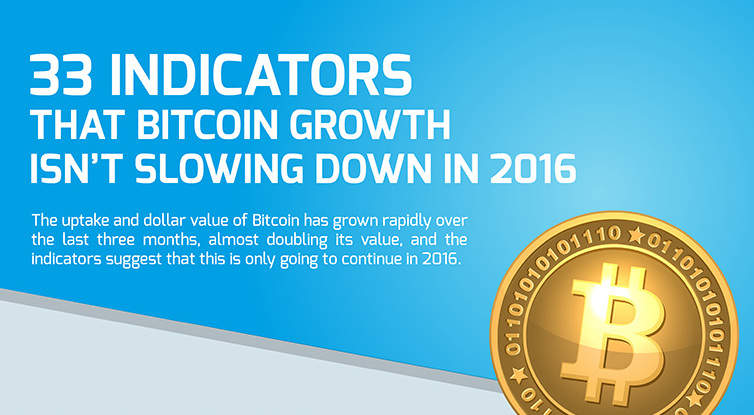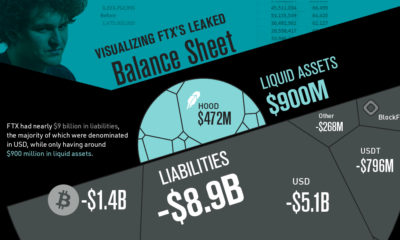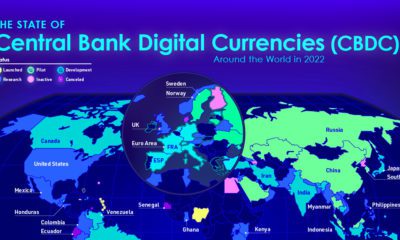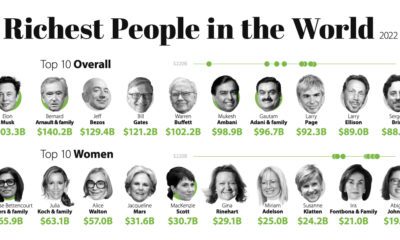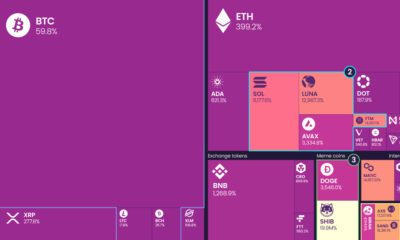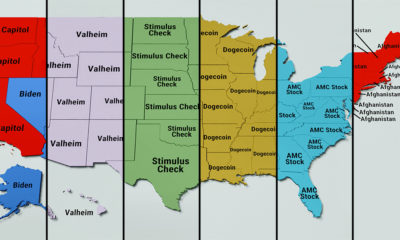33 Signs that Bitcoin Growth Isn’t Slowing in 2016
It’s been a year of mixed results for cryptocurrency enthusiasts and speculators. The biggest positive for Bitcoin is that it was actually the best performing currency this year, ahead of the US Dollar and the Israeli Shekel. Bitcoins have climbed a solid 21% in value over the course of the year in USD terms, and even more relative to other currencies. While the cryptocurrency hasn’t reached the heights it did in 2013, this is still a sign of positive strength. On the other hand, mainstream news around Bitcoin over the course of 2015 has been distracting at best. Ross Ulbricht, the man supposedly behind Silk Road, was sentenced to life imprisonment in May without the possibility of parole. More recently, the Hunt for Satoshi has also heated up. Wired and Gizmodo subsequently both published reports that former Australian academic Craig Steven Wright was the creator of Bitcoin. Within hours, his house was raided by Australian police as part of an “unrelated” case. Days later, Wired rescinded its affirmation that Wright was the creator of the cryptocurrency, and instead asserted it was an elaborate hoax. Lastly, despite close to $500 million in venture capital going into cryptocurrency-related pursuits, so far there hasn’t been any breakthroughs or apps that have captured the public’s eye. There has been progress and recognition around the merits of blockchain technology, but ultimately Bitcoin remains in the trough of disillusionment.
Bitcoin Growth in 2016
Today’s infographic highlights 33 signs that growth in Bitcoin will not slow down in 2016. In our opinion, here are the most important reasons:
The total amount of VC investment in Bitcoin since 2012 is $927 million. Over half of this investment has occurred in 2015 alone. World-class merchants now accept bitcoins for payment, including: Microsoft, Dell, Expedia, Dish, Overstock, TigerDirect, and Intuit. Transaction fees with bitcoins are extremely low: 0.0001 BTC per 1000 bytes. Daily transactions occurring with bitcoins amount to about $289 million per day. This is comparable to Paypal ($397 million), Square ($362 million), or Western Union ($216 million).
Original graphic by: BargainFox
on But fast forward to the end of last week, and SVB was shuttered by regulators after a panic-induced bank run. So, how exactly did this happen? We dig in below.
Road to a Bank Run
SVB and its customers generally thrived during the low interest rate era, but as rates rose, SVB found itself more exposed to risk than a typical bank. Even so, at the end of 2022, the bank’s balance sheet showed no cause for alarm.
As well, the bank was viewed positively in a number of places. Most Wall Street analyst ratings were overwhelmingly positive on the bank’s stock, and Forbes had just added the bank to its Financial All-Stars list. Outward signs of trouble emerged on Wednesday, March 8th, when SVB surprised investors with news that the bank needed to raise more than $2 billion to shore up its balance sheet. The reaction from prominent venture capitalists was not positive, with Coatue Management, Union Square Ventures, and Peter Thiel’s Founders Fund moving to limit exposure to the 40-year-old bank. The influence of these firms is believed to have added fuel to the fire, and a bank run ensued. Also influencing decision making was the fact that SVB had the highest percentage of uninsured domestic deposits of all big banks. These totaled nearly $152 billion, or about 97% of all deposits. By the end of the day, customers had tried to withdraw $42 billion in deposits.
What Triggered the SVB Collapse?
While the collapse of SVB took place over the course of 44 hours, its roots trace back to the early pandemic years. In 2021, U.S. venture capital-backed companies raised a record $330 billion—double the amount seen in 2020. At the time, interest rates were at rock-bottom levels to help buoy the economy. Matt Levine sums up the situation well: “When interest rates are low everywhere, a dollar in 20 years is about as good as a dollar today, so a startup whose business model is “we will lose money for a decade building artificial intelligence, and then rake in lots of money in the far future” sounds pretty good. When interest rates are higher, a dollar today is better than a dollar tomorrow, so investors want cash flows. When interest rates were low for a long time, and suddenly become high, all the money that was rushing to your customers is suddenly cut off.” Source: Pitchbook Why is this important? During this time, SVB received billions of dollars from these venture-backed clients. In one year alone, their deposits increased 100%. They took these funds and invested them in longer-term bonds. As a result, this created a dangerous trap as the company expected rates would remain low. During this time, SVB invested in bonds at the top of the market. As interest rates rose higher and bond prices declined, SVB started taking major losses on their long-term bond holdings.
Losses Fueling a Liquidity Crunch
When SVB reported its fourth quarter results in early 2023, Moody’s Investor Service, a credit rating agency took notice. In early March, it said that SVB was at high risk for a downgrade due to its significant unrealized losses. In response, SVB looked to sell $2 billion of its investments at a loss to help boost liquidity for its struggling balance sheet. Soon, more hedge funds and venture investors realized SVB could be on thin ice. Depositors withdrew funds in droves, spurring a liquidity squeeze and prompting California regulators and the FDIC to step in and shut down the bank.
What Happens Now?
While much of SVB’s activity was focused on the tech sector, the bank’s shocking collapse has rattled a financial sector that is already on edge.
The four biggest U.S. banks lost a combined $52 billion the day before the SVB collapse. On Friday, other banking stocks saw double-digit drops, including Signature Bank (-23%), First Republic (-15%), and Silvergate Capital (-11%).
Source: Morningstar Direct. *Represents March 9 data, trading halted on March 10.
When the dust settles, it’s hard to predict the ripple effects that will emerge from this dramatic event. For investors, the Secretary of the Treasury Janet Yellen announced confidence in the banking system remaining resilient, noting that regulators have the proper tools in response to the issue.
But others have seen trouble brewing as far back as 2020 (or earlier) when commercial banking assets were skyrocketing and banks were buying bonds when rates were low.

